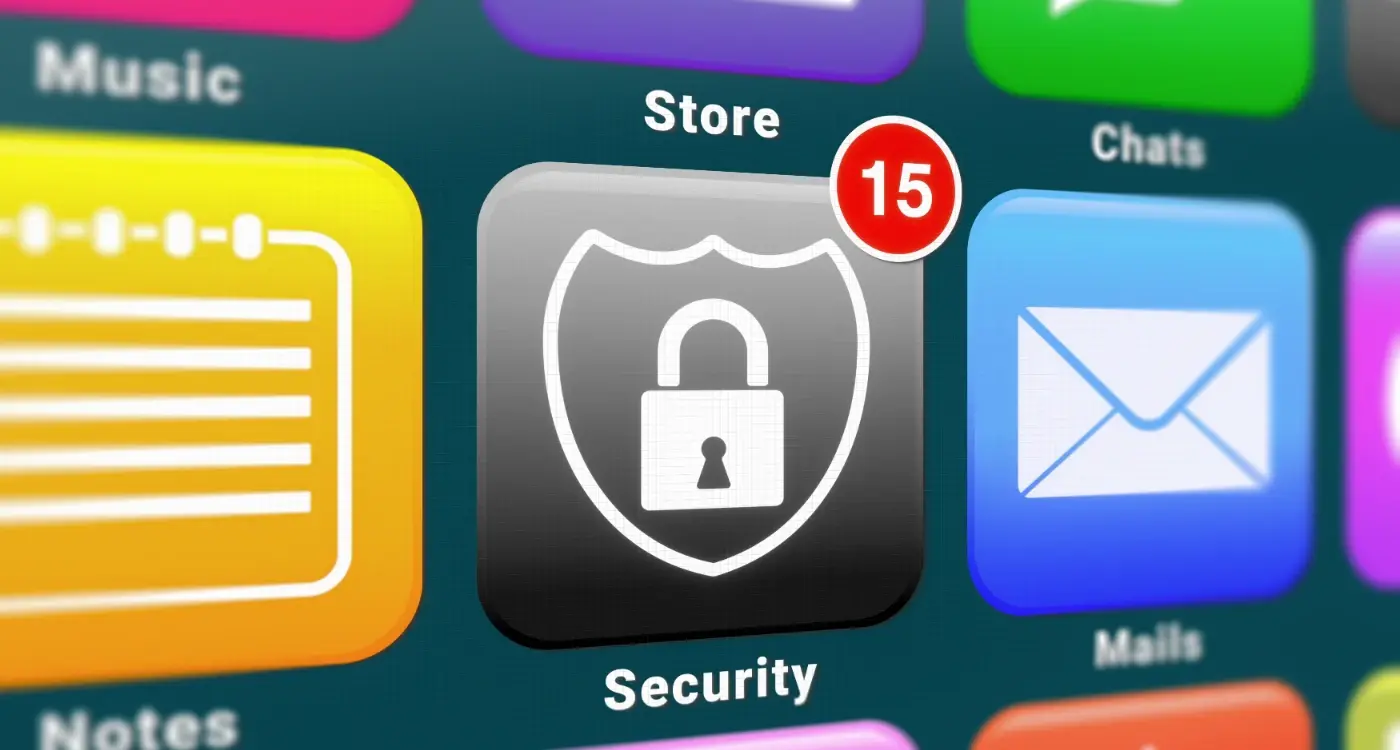How Do I Backup My App's Data In The Cloud Safely?
Every 39 seconds, a business falls victim to a cyberattack that could have been prevented with proper data backup systems. I've been developing mobile apps for close to a decade now, and trust me—nothing keeps app developers awake like the thought of losing months of user data because they skipped the backup process. Your app might be brilliant, your design might be flawless, but without proper data protection, you're one server crash away from disaster.
Most people think backing up app data is just about copying files to another location. Wrong! It's about creating a safety net that protects your users' information, maintains their trust, and keeps your business running when things go sideways. And they will go sideways at some point—servers fail, databases corrupt, and yes, sometimes entire cloud services have outages.
The best backup system is the one you set up before you need it, not after you've already lost everything
This guide will walk you through everything you need to know about backing up your mobile app's data safely in the cloud. We'll cover the different types of data that need protection, how to choose the right cloud storage solution, and most importantly—how to do it all securely. Because protecting your users' data isn't just good practice; it's your responsibility as a developer.
Understanding Cloud Data Backup
After building mobile apps for more years than I care to admit, I've learned that cloud data backup is simply storing copies of your app's information on remote servers—think of it as keeping your important files somewhere safe, away from your main device. When your app saves user data, photos, or settings, cloud backup makes sure there's always a spare copy sitting safely on powerful computers owned by companies like Google, Amazon, or Microsoft.
The beauty of cloud backup lies in its simplicity; your app automatically sends copies of data to these remote servers without users having to think about it. If someone drops their phone in the bath (happens more often than you'd think!), loses it, or upgrades to a new device, all their information can be restored from the cloud backup.
Why Cloud Backup Matters
Local storage on phones is risky business—devices break, get stolen, or simply stop working. Cloud backup gives you redundancy, meaning your data exists in multiple places at once. Most cloud providers store your data across several locations, so even if one server fails, your information remains safe elsewhere.
From a development perspective, cloud backup also means happier users; nobody wants to lose their game progress, photos, or carefully crafted settings because their phone decided to have a bad day. This is especially important when your app developers are taking backups seriously as part of their development process.
Types of App Data That Need Protection
After years of building mobile apps, I've learnt that not all data is created equal—some bits are far more sensitive than others. Understanding what needs protecting is half the battle when it comes to setting up proper data backup for your mobile app.
Start by categorising your app's data into three groups: public, private, and sensitive. This makes it much easier to decide what level of protection each type needs.
Personal User Information
User profiles, email addresses, phone numbers, and personal preferences top the list of data that needs serious protection. People trust you with this information, and losing it can damage your reputation permanently. Payment details, addresses, and any form of identification data fall into this category too.
App-Generated Content
This includes user-created content like photos, messages, documents, or any files your users store within your app. Game progress, settings, and custom configurations might seem less important, but losing this data can frustrate users just as much as losing their personal details.
- Login credentials and authentication tokens
- Financial information and transaction history
- Location data and tracking information
- Medical or health-related data
- Chat logs and communication records
- User preferences and app settings
The key is identifying which data would cause the most problems if it disappeared tomorrow. That's your priority list for backup and protection right there. It's also worth ensuring you understand GDPR requirements when creating an app, as this affects how you handle and protect user data.
Choosing the Right Cloud Storage Solution
After years of building mobile apps, I can tell you that picking the wrong cloud storage provider is one of those mistakes that keeps developers up at night—and I've made my fair share of them! The good news is that there are several reliable options available, each with their own strengths and weaknesses.
Amazon Web Services (AWS) remains the most popular choice for good reason; it's reliable, scalable, and offers comprehensive backup services. Google Cloud Platform provides excellent integration if you're already using Google services, whilst Microsoft Azure works brilliantly for apps that need to connect with Microsoft systems.
Key Factors to Consider
When selecting your cloud storage solution, you'll need to evaluate several important factors:
- Cost structure and pricing models
- Geographic location of data centres
- Compliance with data protection regulations
- Available backup and recovery features
- Integration capabilities with your existing systems
- Technical support quality and availability
Making the Final Decision
Don't rush this decision—take time to test different providers with small amounts of data first. Most cloud providers offer free trials or credits to get you started. Consider your app's specific needs; a simple note-taking app will have very different requirements compared to a photo-sharing platform that handles thousands of images daily. Understanding the state of mobile development today can help inform your cloud storage decision.
Setting Up Automatic Data Backup
Right, let's get your mobile app's data backup running on autopilot. I've set up countless backup systems over the years—some brilliant, some absolute disasters—and the key is making it automatic so you don't have to think about it.
Most cloud providers offer scheduling tools that'll handle this for you. Google Firebase, AWS, and Microsoft Azure all have built-in automation features that can backup your app data daily, weekly, or even hourly if needed. The trick is finding the sweet spot between protecting your data and not overwhelming your storage costs. This is just one of many considerations when taking your business apps to the next level.
Setting Your Backup Schedule
Start with daily backups for active apps—this gives you solid data protection without going overboard. User-generated content like photos, messages, and settings should be backed up more frequently than static content. You can set different schedules for different types of data, which is quite clever actually.
The best backup system is the one that runs without you having to remember it exists
Testing Your Automatic Setup
Once you've configured everything, run a test backup manually to make sure it's working properly. Check that your data is actually reaching the cloud storage and that the files aren't corrupted. I always recommend doing this during low-traffic periods to avoid any potential disruption to your users.
Security Measures for Cloud Data Protection
Right, let's talk about the stuff that keeps app developers awake at night—security. I've seen too many projects go sideways because someone thought "we'll sort the security bit out later" and, well, later never came. When you're backing up your app's data to the cloud, you're basically handing over your users' information to someone else's computer; that's what the cloud is, by the way—just someone else's computer!
Encryption is Your Best Friend
First things first: encrypt everything. And I mean everything. Your data should be encrypted both when it's travelling to the cloud (that's called "in transit") and when it's sitting there doing nothing (that's "at rest"). Think of it like putting your data in a locked box before posting it, then the postal service puts it in another locked box. Most decent cloud providers offer this automatically, but always double-check.
Access Controls and Authentication
Next up—who can actually get to your data? Set up proper access controls so only the right people can see the right stuff. Use multi-factor authentication wherever possible; yes, it's a bit of a faff, but it's worth it. I also recommend regularly reviewing who has access to what—people leave companies, roles change, and you don't want your old intern still having admin access to your production data backup! Make sure you understand whether you need to follow GDPR rules for your app, as this affects your access control requirements.
Testing and Monitoring Your Backup System
Setting up your mobile app data backup is only half the battle—testing it regularly is what separates the professionals from the amateurs. I've seen too many developers assume their backup system is working perfectly, only to discover during a crisis that their data protection failed months ago.
Start by scheduling monthly restore tests where you actually recover your app data from the cloud backup. Don't just check if the files are there; make sure they open correctly and contain the information you expect. This process might seem tedious, but it's the only way to guarantee your data backup will work when you need it most. Just like protecting your app's code, you need to make sure you don't lose your app's data either.
Setting Up Monitoring Alerts
Most cloud storage providers offer monitoring dashboards that track backup success rates and storage usage. Configure these to send you alerts when backups fail or when unusual activity occurs. You'll want notifications for failed uploads, corrupted files, or unexpected spikes in data usage.
Regular Health Checks
Beyond automated monitoring, perform quarterly deep dives into your backup logs. Look for patterns in failures, check that all app data types are being captured, and verify that your backup retention policies are working as intended. This attention to detail is part of what separates stellar apps from so-so apps.
Create a simple spreadsheet to track your monthly backup tests—record the date, what you tested, and any issues found. This documentation will be invaluable if you ever need to troubleshoot problems or demonstrate compliance to stakeholders. Good backup practices can also improve your company's customer service by ensuring user data is always available when needed.
Conclusion
Setting up cloud backups for your app's data isn't just about ticking a box—it's about protecting your users and your business from disaster. I've seen too many developers learn this lesson the hard way, losing months of user data because they thought "it won't happen to me." Trust me, it can happen to anyone.
The good news is that once you've got your backup system running, it becomes second nature. Your data gets copied automatically, your security measures work quietly in the background, and your monitoring alerts keep you informed without being annoying. It's one of those things that just works when you set it up properly.
Don't try to build everything at once though. Start with the most important user data—the stuff that would cause real problems if it disappeared. Get that backed up securely, test it properly, then gradually expand to cover everything else. Your users are trusting you with their information, and that's not something to take lightly.
The cloud storage providers have made this much easier than it used to be, but you still need to do your homework. Choose the right provider for your needs, encrypt everything, and test your backups regularly. Because the only thing worse than losing data is discovering your backups don't work when you need them most.
Share this
Subscribe To Our Learning Centre
You May Also Like
These Related Guides

Which Security Standards Do Mobile Apps Need To Follow?

What Cloud Security Measures Does My App Absolutely Need?



